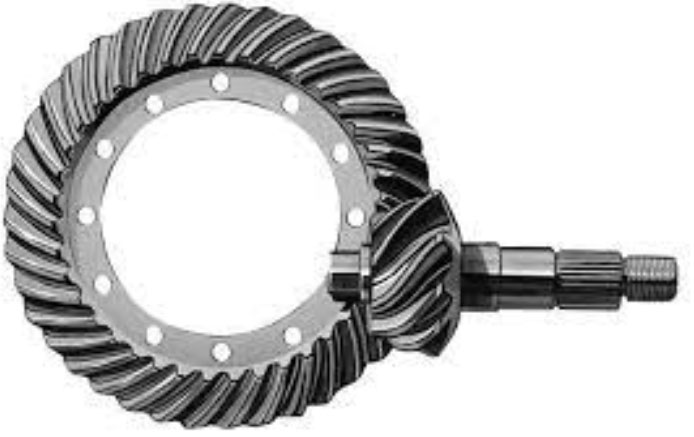
Efficiency and load capacity are critical factors in the performance of hypoid gear systems. These factors determine how effectively the gear system transmits power and handles the applied loads. Let’s delve into efficiency and load capacity considerations for hypoid gear systems:
Efficiency in Hypoid Gear Systems:
- Sliding Contact: Hypoid gears have sliding contact between their gear teeth, which can result in higher friction compared to rolling contact gears like spur or helical gears. This sliding contact introduces additional losses and affects the overall efficiency of the gear system.
- Offset Design: The offset design of hypoid gears allows for a larger pinion diameter, which increases torque capacity. However, it can also lead to additional losses due to increased contact area and more complex tooth engagement.
- Surface Finish and Lubrication: Proper surface finish and lubrication are crucial to reduce friction and minimize power losses. High-quality surface finishing and the use of appropriate lubricants can help improve the efficiency of hypoid gear systems.
- Misalignment Effects: Misalignment between the pinion and gear axes can cause additional power losses and reduce gear system efficiency. Precise alignment during gear manufacturing and assembly is essential to mitigate this issue.
Load Capacity in Hypoid Gear Systems:
- Offset Design and Torque Capacity: The offset design of hypoid gears allows for a larger pinion diameter, increasing their torque capacity compared to straight bevel gears. This makes hypoid gears suitable for applications requiring higher torque transmission.
- Material Selection and Heat Treatment: The choice of materials and appropriate heat treatment processes significantly impact the load-carrying capacity of hypoid gears. Properly selected materials with adequate hardness and wear resistance are essential to handle heavy loads.
- Contact Pattern and Tooth Strength: Achieving a correct tooth contact pattern is crucial for distributing loads evenly across gear teeth. Proper tooth geometry and tooth strength are essential to prevent premature wear or tooth failure.
- Dynamic Loading and Shock Loads: In some applications, hypoid gear systems may be subjected to dynamic loading and shock loads. The design and material selection should consider these factors to ensure the gear system can withstand the applied loads.
Balancing Efficiency and Load Capacity:
- While hypoid gears may have slightly lower efficiency compared to some other gear types, their offset design and larger pinion diameter offer advantages in torque transmission and load capacity.
- Manufacturers often strive to optimize gear design, surface finish, and lubrication to strike a balance between efficiency and load capacity in hypoid gear systems.
- Careful consideration of the specific application requirements, including torque demands, operating conditions, and efficiency expectations, will help ensure an appropriately designed hypoid gear system.
Overall, hypoid gear systems can provide excellent load-carrying capabilities and are commonly used in automotive differentials, heavy machinery, and various other applications where the combination of torque capacity and right-angle transmission is crucial.
